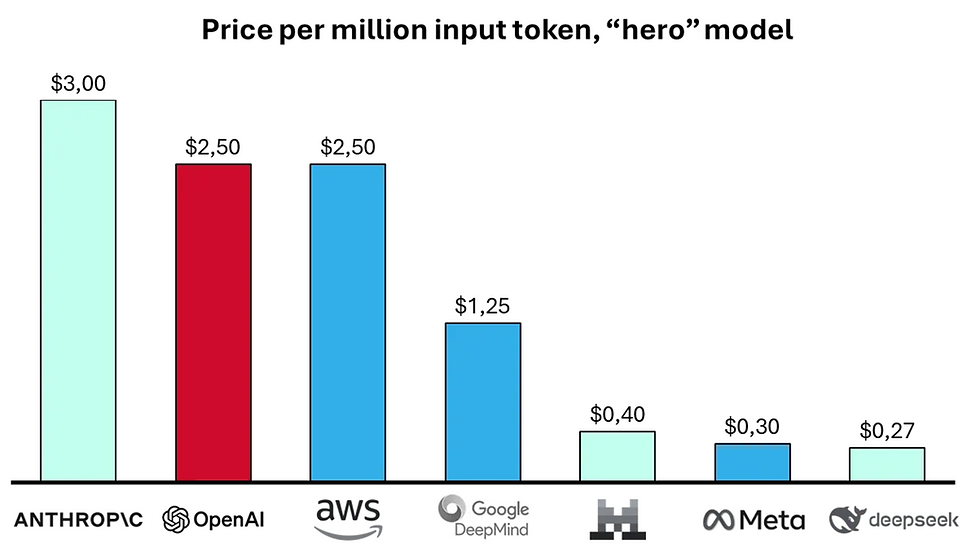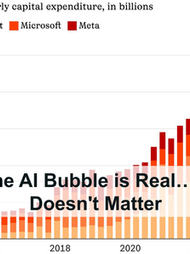The dangers of Artificial Intelligence (shown through a game)
- Adrien Book

- Sep 14, 2018
- 6 min read
Updated: Aug 22, 2020
Provocative headline aside, a fun paperclip-making game hints at why some of Big Tech’s A.I efforts should curbed.
It took me 4 hours and 5 minutes to effectively annihilate the Universe by pretending to be an Artificial Intelligence tasked with making paper-clips. Put another way, it took me 4 hours and 5 minutes to have an existential crisis. This was done by playing the online game “Paperclip”, which was released in 2017. Though the clip-making goal of the game is in itself simple, there are so many contemporary lessons to be extracted from the playthrough that a deep dive seems necessary. Indeed, the game explores our past, present and future in the most interesting way, especially when it comes to the technological advances Silicon Valley is currently oh so proud of.

The game begins by requiring the player, acting as an A.I, to push a button manually to make the first few paperclips. It is tiring work, reminiscent of the industrial revolution. In fact, Adam Smith famously used a pin factory to illustrate the advantages of specialization, and the similarities between a paperclip and a pin are too great not to draw our own conclusions: this game is going for realism.
After having made a handful of clips by hand and selling them at a reasonable price, the player is suddenly able to automate the process through the purchase of “autoclippers”, which help produce more and reduces the price drastically. Congratulation, you’ve inventedFordism, and should have made about 500 paperclips in under 2 minutes. In fact, one can easily have built more than 1,000 clips in under 3mn through a continued investment in increasingly better machinery and the smart purchase of raw materials to build the goods. Never has Moore’s law been more relevant than in this game (Clip, chip, what’s the difference?).
As time passes, some late 20th-century luxuries become available. The player/A.I can invest in an accounting software (always a smart move), and has the possibility to improve its own memory capacity, as well as it’s own processing power. However, as a young A.I, our protagonist must earn the trust of its masters by continuing to operate the clip-making machines so that they may agree to, and invest in, those improvements. These are questions currently being asked in various corners of Silicon Valley: do we trust artificial intelligence to operate a facial recognition system? Do we trust it to operate weapons? It’s easy to trust a robot when things are going well, but as soon as the chips hit the fan… The game is in fact fairly realistic in that matter: if the player makes a calculating error and loses money, trust is automatically decreased.
Once completed, the technological improvements mentionned above allow the player toimprove the company’s marketing capabilities, hence driving the demand. 10,000 paperclips could be made in less than 11 minutes.
Interestingly, the game plateaus at this point, much as A.I research has plateaued in the past few years, as we’ve come to realise the shortcomings of machine learning. What could we do next to overcome this slump? The creators of the game seem to think the best thing to do is push through, optimising operations (we’re talking microlattice, spectral foam and a bunch of other stuff I’d never heard of before), purchasing and marketing (through the creation of a jingle and a slogan, no less), while cramming ever-more computing power into A.I through a mountain of investment.
I am not so sure about this way of doing things over the long term, but it very much remains accurate when discussing 2018.
With the ever-increasing computing power available (and a little help from Xavier’s initialization), the player may choose to allocate a small percentage of its processing away from creating clips and into creative endeavors, as many artists already have done, oftenwith hilarious consequences. The first thing the player may choose to create thanks to machine learning is a Limerick: “There was an AI made of dust, whose poetry gained it man’s trust…”. Nothing creepy about that ammaright? And close enough to what has indeed already been created. This is just enough to show the player/A.I’s potential and convince the engineers/overlords to continue adding computing to the brave clip-making A.I. The exponential operational excellence continues: 100,000 clips in under 30 minutes.
These investments lead to the creation of basic language learning, aka lexical processing, something that is currently one of the only tech holding us back from full bot and voice control. As communication becomes easier, trust increases, and engineers continue to allocate more computing power to to the A.I to not only get MOAR paperclips, but also to solve some of mathematics’ greatest problems, such as The Hadwiger–Nelson problem, or Tóth’s “Sausage Conjecture” (it’s a lot more boring than it sounds).
Naturally, once a company has made enough money through their primary operations, the A.I can open a bank account and put savings in a low return fund. As a smart A.I, however, the player is able to get higher returns than average thanks to algorithmic trading. Losses are to be expected at first because heck, learning this whole finance thing takes a while (especially for an algorithm specialised in paperclips), but the investment is worthwhile. Until A.I introduces systematic weaknesses and risks in the finance world, that is, but that may be asking for too much realism.
This money allows for investment in quantum computing and Photonic chips, making the player’s operational power greater than ever. Quantum computing is also currently the object of much interest within Silicon Valley given the possibilities it could unlock, yet has not had the impact on the collective imagination one could imagine. Blame Hollywood.
The game then steps foot squarely into the science-fiction realm, with just enough similarities to keep the Black Mirror level of creepiness going. The player is allowed to invests into hypno-harmonics, which use neuro-resonant frequencies used to influence customer behavior. Though this doesn’t exist as far as we’re aware, neuromarketing andneuropolitics sure as hell do. While these practices are far from ethical, they’re both successful and widely used. When using hypno-harmonics, marketing suddenly becomes a lot more effective and revenues go through the roof. Go figure.
Thanks to all the cash this generates (by now the stocks investments are paying out big time), the player can build drones for marketing and delivery purposes. Purchasing the competition through hostile takeovers also becomes a possibility, thanks to (one assumes) an inattentive government and outdated monopoly laws.
Now what company has a lot of cash, is heavily investing in A.I, has a lot of drones at hand, and is well known for purchasing any potential threat to its businesses…? I’m not saying Amazon will destroy the universe by making paperclip, but I AM saying they’ve destroyed a lot of businesses by making small, cheap products easily available, and should be regulated as Microsoft once was.
The 1 million paperclip bar is crossed in a bit more than an hour of play.
Having acquired a significant amount of computing power, the player is encouraged to invest in strategic modelling: the ability to form a belief about what some other entity is thinking (see: Donkey Space). To simplify, a human can comprehend what person A believes person B thinks about person C. On a processing scale, this is indistinguishable from magic. On a human scale, it is mere gossiping. This is the game’s most important step: something resembling real agency.
Thanks to quantum computing, language learning and strategic modelling, the player can now help humans with their greatest issues thanks to Coherent Extrapolated Volition. COV essentially means that programming our desires and motivations into an AI would not be nearly as successful as finding a way to program it in a way that it would act in our best interests. You may recognise the concept from I, Robot, and about every other Sci-Fi movie where an A.I goes evil. Thanks Yudkowsky. Having internalised this concept, the player can choose to, by order of importance, stop global warming, cure cancer, reach world peace and cure male pattern baldness. Priorities.
With all the trust gained from solving these issues, the game becomes a lot of fun as computing power expends exponentially. Thanks to Strategic modelling and COV, the player is encouraged to give a gift to the A.I’s human supervisors. In cash. The game calls them “token of goodwill”, but I prefer the term lobbying. Gee, I wonder who currently spends the most on lobbying nowadays? Do they have A.I and drones businesses by any chance? Mmhm…
The money appears to be well spent, as Full Monopoly quickly becomes available, and the player remains unbothered by anti-trust issues. Big PaperClip is here to stay!
Once the politicians are controlled, the drones and hypno-harmonics can finally be put to good use through the launch of hypno-drones, which effectively enslave then wipe out humanity. Full autonomy is attained in less than 2 hours. End of the first stage.
Though I will not go into details, the second stage is more akin to a power management simulator, in which the player’s job is to balance power production with the consumption needs of drones as they consume the earth’s resources to make paperclips. The final stage is space exploration, where the player needs to manage an autonomous, self-reproducing drone fleet to explore and consume the Universe.

Throughout the play-through, we learn a few interesting lessons. Firstly, it is all-too-easy to assume the agency of something that has none. Secondly, we clearly see that A.I is hardly more than Data + Memory + computing power, something many fail to grasp. Thirdly, we once again see the importance of good governance: the failure to hold engineers accountable was humanity’s doom.
At the end of the day, Asimov’s laws of robotic could easily be replaced by a binding honesty, transparency and responsibility agreement with engineers.
THE FATE OF THE UNIVERSE MAY DEPEND ON IT.



























tài xỉu md5 được yêu thích bởi khả năng loại bỏ nghi ngờ can thiệp kết quả nhờ mã hash công bố trước khi xúc xắc được lắc. Người chơi hoàn toàn chủ động xác minh kết quả sau mỗi vòng, tạo sự minh bạch tuyệt đối. Nếu bạn tìm kiếm nơi trải nghiệm an toàn, tốc độ và dễ sử dụng, hãy đến taixiumd5 us com hoặc truy cập https://taixiumd5.us.com/ để khám phá không gian giải trí đáng tin cậy.
Theo thông tin mới nhất, Ga6789 đang trở thành nhà cái được yêu thích nhất trong lĩnh vực đá gà trực tiếp. Trang chủ luôn cập nhật liên tục các trận trực tiếp đá gà với chất lượng hình ảnh sắc nét. Đây là địa chỉ đáng tin cậy cho cộng đồng đam mê cá cược.
DEBET – nền tảng cá cược trực tuyến uy tín với hàng nghìn trò chơi hấp dẫn
TA88 ngay hôm nay để nhận thưởng 100% giá trị nạp đầu cùng hàng loạt ưu đãi hấp dẫn mỗi tuần.
Được cấp phép bởi MGA và vận hành theo tiêu chuẩn quốc tế, KUWIN khẳng định vị thế là nhà cái hàng đầu khu vực. Người chơi có thể trải nghiệm hàng trăm trò chơi hấp dẫn, từ casino đến xổ số. Với KUWIN, mọi giao dịch đều nhanh chóng, minh bạch và an toàn tuyệt đối – đó chính là cam kết của kuwinblog com.